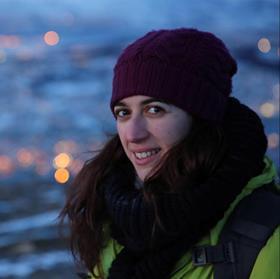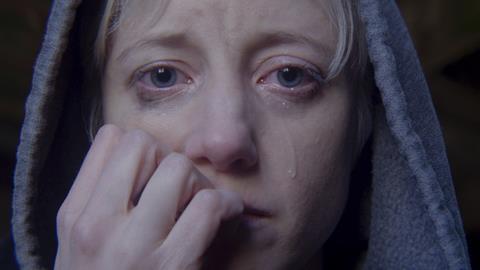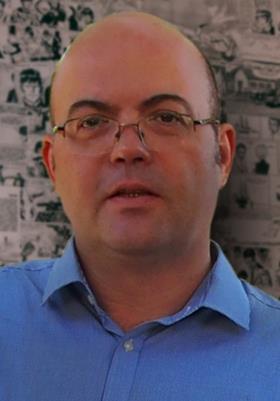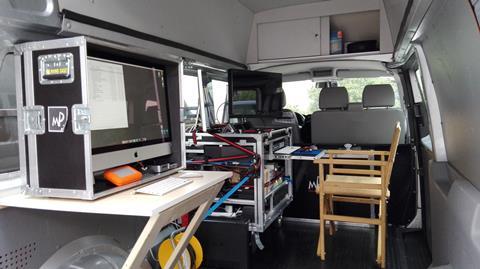In the first of a series of articles that look at job roles and their relationship with technology, Alana Foster speaks with three digital imaging technicians whose credits include Black Mirror, Skyfall and McMafia.
Digital imaging technicians (DIT) work across film, TV and commercials and are responsible for the handling of content and image quality control from creation throughout its lifecycle on and off set. The growth in use of digital camera resulted in the creation and progression of the DIT position, with the role evolving from on-set engineering to technical workflows and colour correction and oversight of the production workflow.

Tom Mitchell, Mission Digital Technical Director
Mitchell is passionate about new technologies and creating new workflow solutions and is Mission Digital’s resident colour science expert. He set up the company after working as a freelance DIT for over three years on productions including the lab on Skyfall as well as on Under the Skin and Pirates of the Caribbean amongst other projects.
How do you describe the role of a DIT?
There is certainly confusion on the job role and what it entails. Most people mistakenly think onset DITs are just there to download data. The core responsibility of a DIT is managing the image pipeline and taking care of the camera.
I consider it for four separate and key functional roles that are amalgamated together in the same way as in the camera department; such as the focus puller, clapper loader, central loader.
The four key roles:
DIT (Digital Imaging Technicians) responsible for the camera systems, colour pipeline, negatives and ensure the image is consistent from start to finish.
DAS (Data Acquisition Supervisor) principal role is ensuring all the data is backed up, Ensure metadata is collected.
Digital Dailies works in the lab, operating thorough quality control, sound sync, process, checking deliverables, paperwork, admin, metadata input.
Digital Dailies Colourists create a best light, make sure all shots are balanced the same way throughout the project, as well as assist in the Lab operations. Normally supported by an operator, thus Labs are often run day and night each doing alternative shifts.
On larger jobs you need separate people for all the roles but on smaller jobs such as a simple pack shoot you would maybe have a focus puller covering all the different job roles as the requirements for the job is much smaller.
On larger features and high-end TV shows the responsibilities are divided up, but as jobs scale down this can be reduced to a DIT that also downloads data on set.
With the digitalisation of technology and now writing video to disk the role of a DIT has expanded from downloading footage instead of just labelling up a SR tapes and expands to digital processing in a lab, ingesting the footage to ensure the colour was applied to the offline footage with metadata to track the changes and the final media is backed up either to hard drives or now a LTO tape.
What does a typical working day entail?
I worked on 47 Ronin, starring Keanu Reeves, which had a scene where a wall needed to be blown up with 40 extras in Samurai outfits. There were few rehearsals and I had noticed that the foreground soldiers were barely visible and we wanted the scene to be chaotic and busy.

We had only one take for this shot so I had to make a call with the Director of Photography (DOP). If we had not spent 20 minutes to relight the set, moving the production cranes that had with huge lighting rigs attached, the scene wouldn’t have looked as it did in the film.
It requires thinking on your feet and having the confidence to speak up to your superiors under high pressure situations.
How has technology evolved the role of a DIT?
The technology we use is constantly evolving. The job came first and the tools had to catch up. We’ve been in a race against the capabilities of the tools and what is being asked of us. Today, computers are getting faster and the high-end shooting produces more data and therefore requires more processing power.
The image is at the centre of our work, and a high end calibrated monitor and good measuring tools and equipment is incredibly important to successfully manage the image. If we are shooting a Ferrari, we need to ensure it is the right ‘Ferrari red’, as it’s really important for the brand; sometimes what you see on the monitor at what you capture isn’t always the same. A component to the role of a DIT is to decipher this.
With Amazon, Netflix and iTunes in the TV market, I expect more high-end film-like content on TV, with huge VFX scenes and tight turnaround times, and the expectations on VFX are constantly evolving.
More so than ever the industry has become much more focused on the importance of capturing metadata in addition to recording the medium of video and audio.
A DIT’s role is to help with this and the best place to start is getting the info onset. The tools required in the future will help the reading of extraneous data including the lenses used, GPS position of the camera and where in 3D space the camera was positioned.
I expect less green screens to be used in the future when depth mapping becomes a focus. There is a growing demand for instant capabilities to see what the CGI dragon looks like onset and how it looks in frame. The role is certainly not becoming simpler, it is becoming much more complex as are the demands. It’s a really exciting time.
Mitchell’s top 3 DIT skills
Good communication and a proactive mindset is fundamental. As a DIT you are responsible to deliver information in a concise manner to a hierarchy of colleagues across different departments.
Problem solver able to make informed decisions under time pressures, able to consistently plan and present solutions to be delivered rather than challenges.
Technologically savvy from knowing the cameras in operation to data management and processing images throughout its lifecycle to ensure consistency and delivery of how the Director of Photographer intended.
What are the most challenging aspects of working as a DIT?
The difference between expectations and budget can be poles apart. The trick is how do you get 80% of what is required for 20% of the cost. Every production presents new challenges.

Some productions are well resourced, though. For example, when I worked in the lab for Skyfall you didn’t feel as though you were cutting corners. It was a high-pressure environment but we had the means to do our job well and had extremely high expectations of the work we needed to deliver.
Speaking of high end work, the film Under the Skin had eight specialist cameras because there was not a commercial digital camera small enough to capture high enough quality images. Days before the production, we had to work out onset how to decode the files on camera which had never been used before.
Challenges can also be logistical, such as working on the TV series Trust shot by Chris Ross and overcoming how you shoot in several countries all at once and still deliver consistent results on time.
What technology and trends do you expect to change the industry in the next five years?
We are already talking about high dynamic range (HDR) and new colour formats such as Rec2020 . We are at the beginning of this technology which allows us to see images in film the way our eye does in real life. New standards are still progressing towards monitors and projectors to take advantage of the evolution in image fidelity.
I don’t think we have seen the end of what I call volume metric film making (stereo 3D was one version of that) as well as technologies such as augmented reality (AR) and virtual reality (VR) and demand will help drive technologists to build better ways that we can see that content in a comfortable way.
People’s perceptions will change over the next five years with the younger generation growing up and watching content primarily on their smartphone and high frame rate Xbox and YouTube videos, the image style has changed.
The ultimate technical aim is to make images look as realistic as possible whilst also balancing creative control. However, people’s opinion of the gold standards of quality is, will shift over time and will play a major part in the industry as it will have to adapt to those changes.
The biggest issue the industry faces today is the expiry dates on hard drives, digital drives have a lifespan of five years or so. Which is about how long we have been shooting mainstream digitally. I think we are going to lose a lot of valuable material, as an industry we need to establish how to preserve this content and solve this problem.
The final edit of the film is a very valuable entity and great care is taken on preserving this, however, when you’ve shot 200 terabytes of data over the course of a film what happens to that footage? It is costly to store and is often considered a lower value than the final film. It’s going to be an issue in the coming years where we lose lots of data because the content isn’t backed up on long-term storage.

Nuria Perez, Digital Orchard DIT
Perez studied media in Barcelona, Spain where she established her love for working behind the scenes on production sets whilst studying for her Masters in Cinematography. She began as a camera trainee working on commercials and learning the role of a camera loader. She moved to London five years ago to pursue her career and has worked on Netflix’s Black Mirror amongst commercials, features and TV series.
What skills do you need to work as a DIT?
A DIT manages the digital handling of the content, working with the cinematographer and the post-production team behind the camera of film and television productions.
Key skills I find that are crucial to my day-to-day is being confident and able to work in a team, listening and being a people person is very important. It can be challenging working with different personalities, when I started as a trainee, advise I was given onset was to be like a ghost and that you will only be noticed when things go wrong.
People often think we simply copy and paste. That is the misconception and often components of the job beyond wrangling the data are misunderstood. We have to make sure the camera checks are done and everything is covered with the camera operations.
I have always been interested in what is happening onset and found speaking with my colleagues helped me to gain knowledge of the current pipeline of work. Understanding the different workflows for each project is vitally important working onset.
What does being onset look like for you?
My first responsibility is to check the camera department have everything they need to start the day and to make sure I know what the DOP wants because they haven’t shot anything yet. You need to be hands-on, understand the vision of the project and set up your station when you’re starting a project to make sure everything is ready for filming.

Once the shoot is underway, my job is to ensure everything is backed up after the camera re-loads, this is so important during commercials because of the short turnaround time, If we lose footage we’ve lost the work from the day.
For TV and film the focus moves more to the monitoring side of the production and making sure the colour and flicker are in focus. A DIT’s role is also an extra pair of eyes for the cinematographer, to verify the reload and back up, looking at the images and making sure the first light which balances the exposure the DOP has chosen.
How has technology evolved the role of a DIT?
Depending on the project you’re working on the kit can vary, so you need to be flexible and have a solid knowledge of workflows and technology to hit the ground running. Commercials with one camera shot over a few days is incredibly different from working on TV series or a feature film. The basic Mac Pro power and with a 7-inch monitor to keep an eye on the exposure is fairly standard equipment.
Working on features and TV series, we have to do live grading onset. Live grading occurs in a separate lab, the lab usually starts later after the first reload. The craft and creative challenges often means we end up running out of light and as a result, the colour is all over the place, this becomes tricky and falls as a responsibility for the DIT.
The technology has evolved a lot and changed significantly in the last 10 years. When I first began people were going out with a MacBook Pro and Firewire 800, today that would be a nightmare. The quantity of data ingested couldn’t cope technically with the amount of footage and the quality of the footage.
The quality of the codecs that we use nowadays is so much better and heavier than it once was. It is vitally important to keep up with the cameras and the new codecs.
Producers and directors are also working closely with the DIT onset, which is critical to the management of the image lifecycle. From a production perspective, understanding the DIT’s role in processing the image from the digital film lab to curating the dailies is crucial to the success of the production.
What is the most challenging aspect of working as a DIT?
I really enjoy working on different challenging productions from a change in workflows and operational components, it keeps you on your toes. It is a good challenge to jump to different projects and use different cameras.

I found myself working on Red cameras for about a year, I started a new project where they asked about the Arri workflow and I had to change my entire thinking.
Working with the DOP and cinematographer requires constant collaboration. They give you direction on where to go and the workflow has to stick with the post-production houses. There are multiple factors to consider, we have to have production included at all times.
We are making sure that the cinematographer is getting what he expects from the capturing of the content. Facing the colour grade is especially important as the DOP will create features and drama effects, which the colourist is employed to work on those, with the editor and producer. My job is to make sure it all goes in the same direction and the image is maintained from start to finish.
What trends have evolved and changed the industry throughout your career?
Nowadays I am working on projects using cameras that are four or five years old because the quality has been tried and tested. But once a new camera is released it has better sensors and the HDR is higher, the DOP will always choose to shoot with the best quality for each project. As a DIT you need to be technologically savvy.
I think large format film and 65mm film will become a trend over the next few years, as well as the backing up process changing with the quantity of data required for programmes on Netflix is huge.
How are you selected for a job?
As a DIT, a good reputation is really important. You need to be able to chat with a variety of people and often it is the cinematographer you have worked with on projects before that puts in a good word with the production.
I like working across different genres including commercials, features and TV, so a variety of interests means you’re willing to pick up more jobs and gain experience across different projects.
I worked on Black Mirror for Netflix, which was good fun but also a lot of data processing. The cinematographer gave me references of what he wanted the rushes to look like, so you could see the grading evolution and how we worked together. It was really effective.
What advice would you give an aspiring DIT?
If you’re at entry level you must have experience with camera training. Working as a loader is a great side step into the industry. It is very important because we deal a lot with the camera department and a functional knowledge is so important.
Previously I have been left in the truck to build the camera, I couldn’t excuse myself from the job, I needed to know how to build it, and working as an intern gaining experience through university was essential.
My key takeaway would be to make sure you’re not afraid to ask questions and learn as much as possible.

Dejan Boskovic, Freelance DIT
Boskovic has been working in the industry as a DIT for 20 years. Based in Macedonia the demand for DIT’s is high across eastern Europe as VFX are increasingly introduced into productions. Most recently, Boskovic worked on BBC1 drama McMafia as DIT Assistant.
What does being a DIT involve day to day?
As a DIT I am always learning and finding new solutions for the cinematographer and DOP.
Watching and analysing what my peers are doing is an important way of learning to demystify new hardware and software used onset.
Technology changes and new kit enables me to colour grade pictures from the beginning of filming, which is great and allows for greater efficiency.
What impact does technology have on your role?
As the technology matures my job becomes easier in some ways because I can ensure the fast processing and precision of the image from the beginning. I need to be in control of what I am doing with no room for error, because a DIT can’t make mistakes. A project can easily be jeopardised if you are not confident in the technology you are using.

The advances in kit forces me to push the limits forward in my day-to-day and do more during the filming, which was something I didn’t have time for in the past.
Onset today, I can easily live grade, offloads mags, create dailies and upload editorial files in almost the same amount of time as just completing one component previously. This is all thanks to new machines which are faster than before and efficient hardware to complete tasks.
Editing onset is the greatest technological change because you can edit almost an entire movie during the shooting, which shortens the entire time of post-production.
What is the most challenging aspect of working as a DIT?
For me it is to achieve every task that I have during the filming and do better and better from project to project.
Working to the highest ability and always implementing new knowledge, technologies and new solutions as much as I can.
Most workflows appear similar from the outside but when you’re in the process of working they’re incredibly different. It is challenging and interesting to finish the goals set by the cinematographer and DOP, but adapting to the different workflow requires flexibility and skills in multitasking.
What trends have evolved and changed the industry throughout your career?
There is always a need for faster, bigger and stronger but in a physically smaller and lighter hardware kit. The industry developments are expecting changes very quickly, those trends have evolved to the point where we have very powerful machines at our disposal.
When I was working in the late 1990s I had to render images over night because of the time it took to complete, often returning the next day and dissatisfied with the end result. Dissolving between two shots often took 45 minutes but the way technology has matured has really enhanced the ways we can work and what we can deliver.

What technology and trends do you expect to change the industry in the next five years?
The wireless transmission and distribution of video signals on set will be a game changer, as it will allow bigger video resolutions and faster hardware enabling editing.
Everything across the industry is moving towards shortening processing and speeding up editing because as they say time is money. The primary points for development and improvement is the efficient movie making process while at the same time achieving powerful pictures and sound on screen.
What advice would you give to an aspiring DIT?
Progression in the field is directly linked to budgets we work with. If you’re working on big and complex projects with multiply cameras and special effects the challenges will be bigger and a DIT will be required to have greater responsibility.
My advice for an entry level DIT is to gain hands on experience and work in the field. Sometimes it is enough just to watch what somebody else is doing to learn as quickly as possible. As long as you have luck on your side and the drive for success, you will become a professional DIT.
Read more What’s new in the world of grading?
























No comments yet